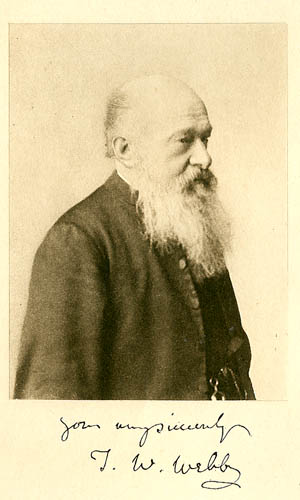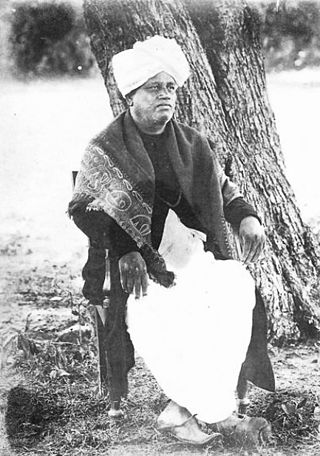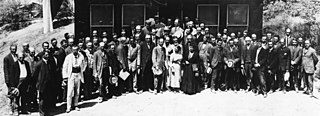
William Lassell was an English merchant and astronomer. He is remembered for his improvements to the reflecting telescope and his ensuing discoveries of four planetary satellites.

Andrew Claude de la Cherois Crommelin was an astronomer of French and Huguenot descent who was born in Cushendun, County Antrim, Ireland. He was educated in England at Marlborough College and Trinity College, Cambridge. After a spell teaching at Lancing College he found permanent employment at the Royal Greenwich Observatory in 1891. He joined the Royal Astronomical Society in 1888 and was its president from 1929-1931. In 1895 he joined the British Astronomical Association and was president from 1904-1906 and directed its comet section 1898-1901 and 1907-1938.

George Ellery Hale was an American astrophysicist, best known for his discovery of magnetic fields in sunspots, and as the leader or key figure in the planning or construction of several world-leading telescopes; namely, the 40-inch refracting telescope at Yerkes Observatory, 60-inch Hale reflecting telescope at Mount Wilson Observatory, 100-inch Hooker reflecting telescope at Mount Wilson, and the 200-inch Hale reflecting telescope at Palomar Observatory. He played a key role in the foundation of the International Union for Cooperation in Solar Research and the National Research Council, and in developing the California Institute of Technology into a leading research university.

Thomas William Webb was a British astronomer. Some sources give his year of birth as 1806. The only son of a clergyman, the Reverend John Webb, he was raised and educated by his father, his mother having died while Thomas was a small child. He went to Oxford where he attended Magdalen Hall. In 1829 was ordained a minister in the Anglican Church. He was married to Henrietta Montague Wyatt (1820-1884) in 1843, daughter of Mr. Arthur Wyatt, Monmouth. Mrs. Webb died on 7 September 1884, and after a year of declining health Thomas died on 19 May 1885.
George Mitchell Seabroke FRAS was an English amateur astronomer. By profession he was a solicitor.
The British Astronomical Association (BAA) was formed in 1890 as a national body to support the UK's amateur astronomers.
William Herbert Steavenson FRAS was an English amateur astronomer.
Reverend William Frederick Archdall Ellison FRAS(28 April 1864 – 31 December 1936) was an Irish clergyman, Hebrew scholar, organist, avid amateur telescope maker, and, from 1918 to 1936, director of Armagh Observatory in Armagh, Northern Ireland. He was the father of Mervyn A. Ellison, the senior professor of the School of Cosmic Physics at Dunsink Observatory from 1958 to 1963.

The Mount Abu InfraRed Observatory (MIRO) is located near the town Mount Abu in the state of Rajasthan, India. The observatory is at an altitude of 1680 metres and is adjacent to Guru Shikhar, highest peak of the Aravalli Range. The 1.2 m infrared telescope at It is the first major facility in India specifically designed for ground-based, infrared observations of celestial objects. Further the low amount of precipitable water vapour at Guru Shikhar makes it a good site for the infrared telescope observations. The site has been found to be good for astronomical observations.
William Edward Wilson was an Irish astronomer.

Chinthamani Ragoonatha Chary was an Indian astronomer who worked at the Madras Observatory along with N.R. Pogson. He was the first Indian Fellow of the Royal Astronomical Society and is known for his studies of variable stars and the discovery of R Reticuli in 1867.
Mary Acworth Evershed was a British astronomer and scholar. Her work on Dante Alighieri was written under the pen name M.A. Orr.

Hugh Frank Newall, FRS FRAS was a British astrophysicist. He was Professor of Astrophysics (1909) at Cambridge. He was the son of Robert Stirling Newall FRS and his wife Mary, daughter of Hugh Lee Pattinson, FRS.
Alice Grace Cook (18 February 1877 - 27 May 1958), known as Grace Cook or A. Grace Cook was a British astronomer. Cook lived in Stowmarket, Suffolk. After she died she was remembered by her colleagues as a skilled and dedicated observer. In September 2021 it was announced that a new school in the town was to be named after Grace Cook. The school will be run by the Orwell Multi Academy Trust. In March 2023 minor planet 2000 EY156 was named Gracecook in her honour.
Kavasji Naegamvala, also known as Kavasji Dadabhai Naegamvala (1857-1938) (FRAS) was an astrophysicist and the director of the Takhtasingji Observatory.

The Hampstead Scientific Society (HSS) in north London was founded in July 1899 as the Hampstead Astronomical and General Scientific Society by P.E. Vizard. It aims to be inclusive, promoting and nurturing an interest in all branches of science, while catering for wide levels of knowledge, from layman to expert alike. The society maintains specialist astronomy and meteorology sections and runs a programme of lectures on various scientific topics in the Hampstead area of North West London.








